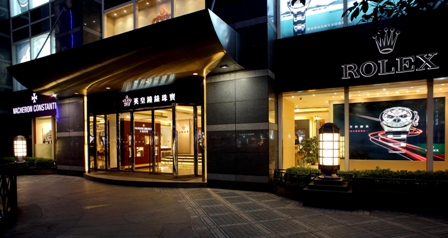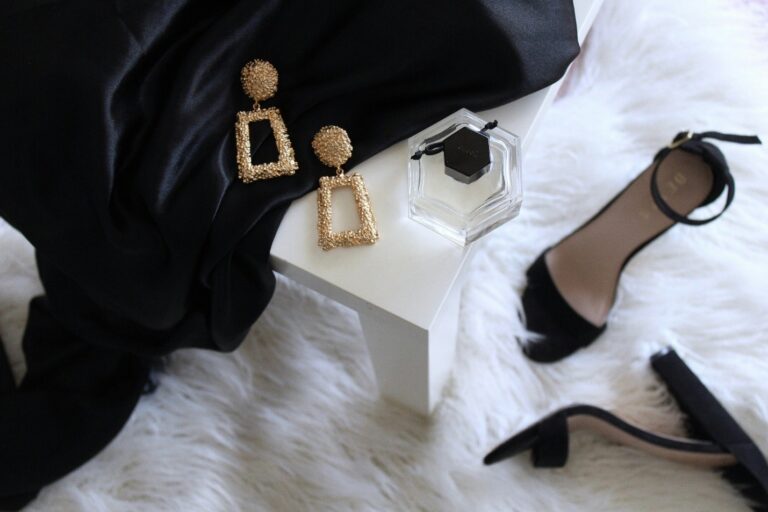China is huge, but very difficult market, especially for luxury brands. Thanks to the rapid urbanization in China over recent years, the development of cities has been remarkable. Small and medium-sized cities, in particular, have attracted a massive number of rural migrants. Rising consumption in these smaller cities has created a huge demand for luxury products. In recent years, many luxury players have stepped into lower-tier cities.
Luxury Brands Strategy in China in 2015
 According to Daxue Consulting’ s 2014 report China luxury market study, released at a press conference, the region’s luxury market is undergoing a fundamental shift, brought on by evolving customer dynamics, an economic slow-down. As a result, luxury brands in China must step up their game in 2015 by adapting to new market conditions and customer expectations. In fact, there were 1.09 million millionaires and 67,000 Super-rich individuals in China in 2013, an increase of 3.8% and 3.7%, respectively from 2012. The growth rates were much slower than that in 2010 and 2011, due largely to the relatively slow recovery of the world economy and slower economic growth in China. With increasing wealth, China’s luxury consumers are looking for something beyond the shopping experience. They are moving away from merely owning a luxury product to “experiencing” luxury. As Chinese consumers are becoming more discerning and more sophisticated their attitudes towards luxury brands and luxury goods consumption are changing. Given the tighter anti-extravagance measures, people are more cautious when spending on premium luxury goods. The skyrocketing prices of some premium luxury brands have prompted consumers to turn to alternative affordable luxury brands that are chic and stylish, but sell at cheaper prices. Also, with China’s E-commerce market becoming more mature, more Chinese consumers are indicating greater confidence for buying luxury products online, particularly via overseas online shopping platforms. This type of cross-border E-commerce activity is commonly referred to as “haitao”. “Haitao” is one form of cross-border E-commerce activity. It has gained popularity over recent years due largely to the price and attracts younger consumers, the discrepancy between luxury products sold in China and the Ones sold in overseas. In this age of brand redefinition, luxury brands in china must shed traditional concepts and channels and follow where their customers lead, or risk losing them. In fact, key strategies of luxury brands in china are;
According to Daxue Consulting’ s 2014 report China luxury market study, released at a press conference, the region’s luxury market is undergoing a fundamental shift, brought on by evolving customer dynamics, an economic slow-down. As a result, luxury brands in China must step up their game in 2015 by adapting to new market conditions and customer expectations. In fact, there were 1.09 million millionaires and 67,000 Super-rich individuals in China in 2013, an increase of 3.8% and 3.7%, respectively from 2012. The growth rates were much slower than that in 2010 and 2011, due largely to the relatively slow recovery of the world economy and slower economic growth in China. With increasing wealth, China’s luxury consumers are looking for something beyond the shopping experience. They are moving away from merely owning a luxury product to “experiencing” luxury. As Chinese consumers are becoming more discerning and more sophisticated their attitudes towards luxury brands and luxury goods consumption are changing. Given the tighter anti-extravagance measures, people are more cautious when spending on premium luxury goods. The skyrocketing prices of some premium luxury brands have prompted consumers to turn to alternative affordable luxury brands that are chic and stylish, but sell at cheaper prices. Also, with China’s E-commerce market becoming more mature, more Chinese consumers are indicating greater confidence for buying luxury products online, particularly via overseas online shopping platforms. This type of cross-border E-commerce activity is commonly referred to as “haitao”. “Haitao” is one form of cross-border E-commerce activity. It has gained popularity over recent years due largely to the price and attracts younger consumers, the discrepancy between luxury products sold in China and the Ones sold in overseas. In this age of brand redefinition, luxury brands in china must shed traditional concepts and channels and follow where their customers lead, or risk losing them. In fact, key strategies of luxury brands in china are;
Adjusting the price in china
As more wealthy Chinese consumers choose to shop luxury products abroad, some luxury brands have started to cut their prices in China with a hope to drive part of the overseas spending back to the country. In case: Chanel has cut the prices of selected product lines available in China by up to 20% starting 8 April 2015; earlier, Swiss watchmaker Cartier also announced it will cut prices on its watches by 5% in China. It is expected that more luxury brands will adjust their pricing strategies in China in the near future.
Building up an online presence
As Chinese consumers are now used to getting product information, if not buying luxury products online. Thus, having a strong online presence is a crucial component of luxury brand’s strategy. – Some luxury brands have created informative, interesting and interactive websites to engage with consumers in China. – Others have started selling on online platforms, usually via three approaches: 1. teaming up with online luxury platforms; 2. setting up own online transactions stores; 3. Setting up a store on a third-party online platform.
Leveraging social media to build brand image
Riding the boom of the e-commerce sector in China, many luxury retailers in China are making huge digital marketing efforts to increase brand equity. Social media has become an increasingly common marketing tool. – Some luxury retailers use Sina Weibo and WeChat to interact with their consumers while others use online video sharing platforms to promote their latest collections and engage with Consumers
Some brands taking back china franchises
To better control brand image and oversee expansion, some big brands have started opening more directly-operated stores, buying back franchises from local partners and taking stakes in other China brands partners. In case: In July 2014, Hugo Boss bought back a 40% stake in its Chinese mainland and Macau joint venture from franchise partner Rainbow Group. Also other luxury brands such as Coach and Burberry have also bought back franchises from local partners or ended a partnership with them to resume direct control over their China stores.
Bonding with the consumers
Luxury brands understand the importance of creating an emotional connection between the brand and the consumers. Some of them have organized special events to educate consumers about the brand story and hope to engage consumers in a more interactive way.
Incorporating Chinese elements in product design
To cater to the preferences of Chinese consumers, some luxury brands have combined modernity and international vision with Chinese traditional elements in their collections.
Premium luxury brands scale down new store openings
Given the challenging times, some premium luxury brands have shifted their focus from aggressive store openings to closing underperformed stores and improving existing Store productivity.
Creating immersive in-store experience
Without any doubt, an increasing number of luxury consumers now tend to shop online, particularly from overseas shopping platforms; however, many still prefer to shop at the physical stores for reasons such as product authenticity, being able to touch and feel the product and enjoy the shopping environment of the physical store. -An increasing number of luxury brands use their physical stores to maintain exclusivity, as well as to provide an exceptional shopping environment and introduce lifestyle experience. Case: Alfred Dunhill
Catering to the needs of the rich traveling Chinese
With more and more Chinese consumers choose to buy luxury goods abroad, luxury retailers have hired sales associates whom can speak Chinese and better understand Chinese consumer’s needs. At the same time, to satisfy the last minute shopping needs of the rich traveling Chinese, luxury brands are keen to open stores in international and domestic airports. The booming china’s luxury brands are just a start. The grasp of the great opportunity in this booming luxury brand, we need a better understanding of the market and consumers. The market develops faster than the speed of store opening; it demands more sophisticated management to follow the expansion. The new rich Chinese need luxury brands to lead their consumption. Contact us, to know more about the Chinese Market! You will also like our post on the Chinese Millenials:
#OnlineAdvertising has a key role to play in enabling brands to engage with #Millennials https://t.co/hmn7MvOkRU pic.twitter.com/guoSJFv9jD
— Daxue Consulting (@DaxueConsulting) October 19, 2015





